Painting the flesh
Artists' Techniques
In flesh areas, a thin grey wash was laid down as an under-layer. An even pink base, a mixture of lead white, red earth and vermilion, was applied next. The main facial features, the nose, mouth and eyes, were outlined with brown, iron-based ink, and highlighted in an organic red pigment. The eyes were further defined with small black dots.
The same brown ink and red pigment were used to model the skin texture with vertical strokes. They were either used sparingly to create youthful, porcelain-smooth complexions or laid down in a dense pattern, resulting in the ruddy faces of older men. Greenish-brown earth was used for shaded areas and lead white for highlights. Finally, a thick impasto of lead white was applied to simulate the texture of bushy eyebrows and in some cases to provide highlights on the cheeks.
Despite general similarities, the work of different artists can be distinguished in the magnified images captured with an optical microscope, by slight differences in the way they blended the paint layers, outlined facial features, and shaped faces, eyes, noses and lips.
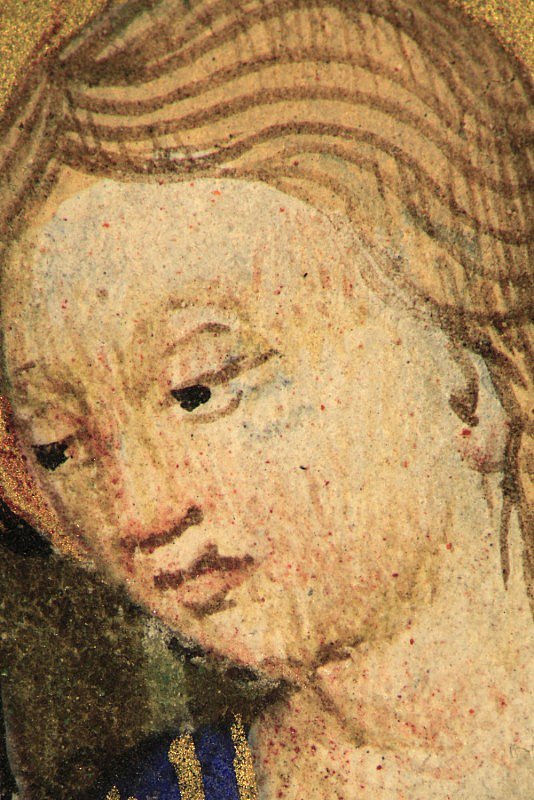
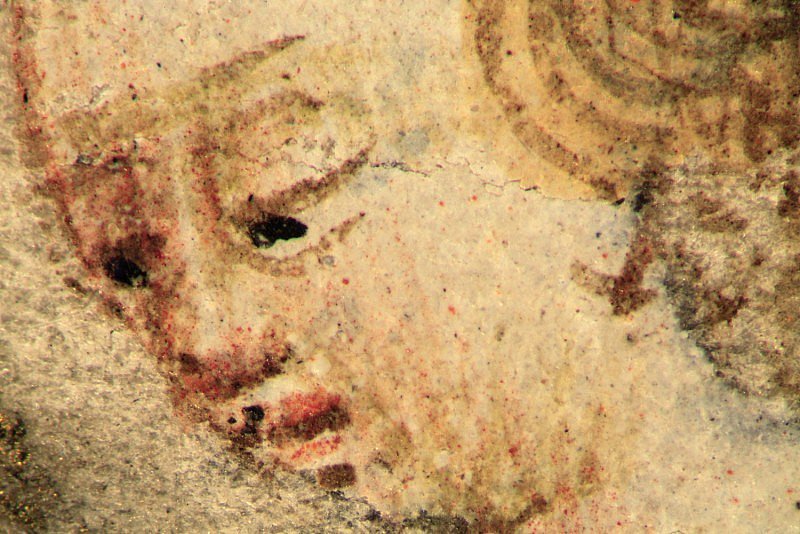
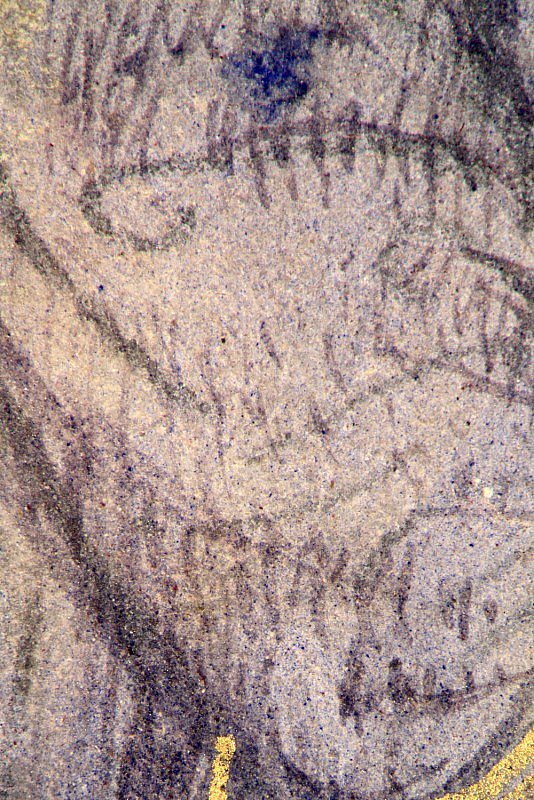
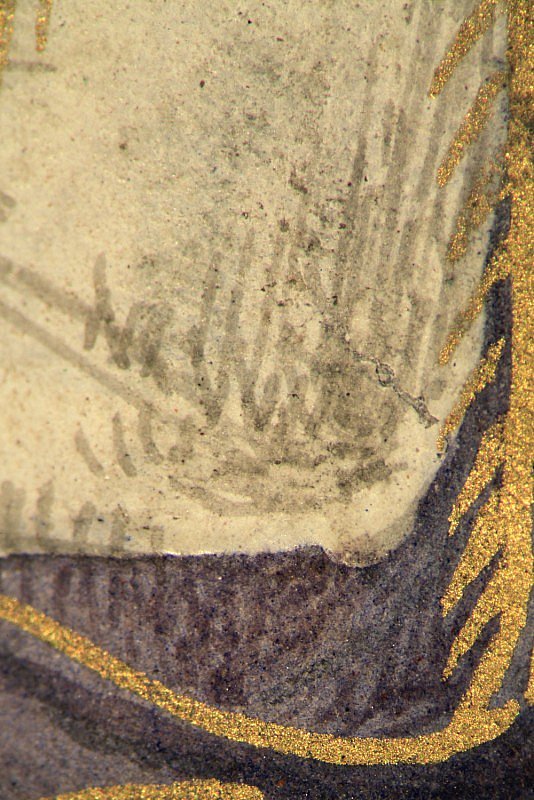
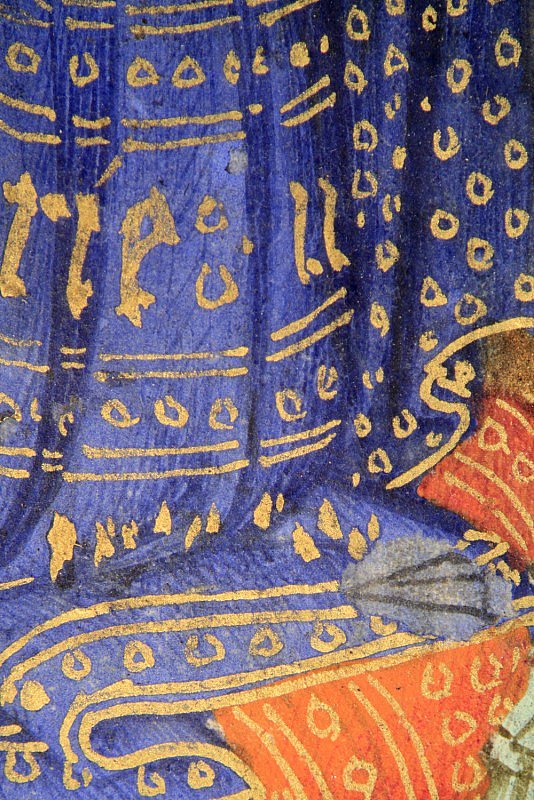
Annunciation (Hours of the Virgin, Matins)
The Annunciation, the standard image for the Hours of the Virgin, is set within an elaborate architectural structure and surrounded by a rich pictorial narrative in the border medallions. Starting from the top left and going anticlockwise, they show God the Father sending the dove of the Holy Spirit towards the Virgin, Joachim and Ann making an offering in the hope for a child, their meeting at the Golden Gate, the Virgin’s birth, her Presentation in the Temple, her Marriage to Joseph, and finally, on the top right, the Virgin at her loom.
The rounded faces with beady eyes (hotspots 1 and 2) and the gold clouds drifting across the sky are among the Giac Master’s hallmarks. Also typical of this artist is the extensive underdrawing and frequent changes of mind at the painting stage (hotspots 1, 3 and 5; see also Infrared Layer).
The arms of Isabella Stuart have been added within the initial.
